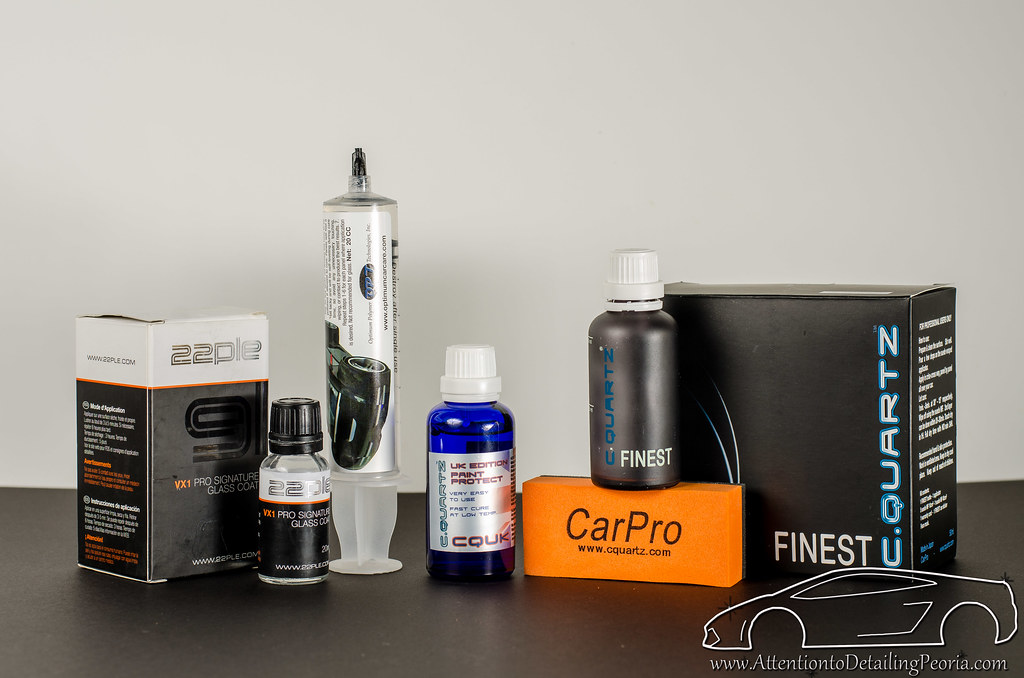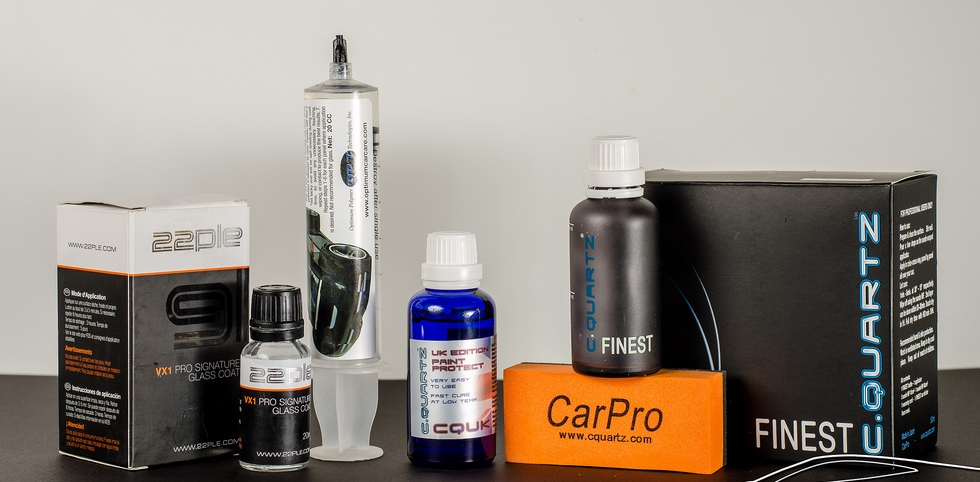Paint coatings have become quite popular over the past several years. When these coatings were first introduced, only authorized professionals could get their hands on them. Although that is still the case for some of the more exclusive products, now there are plenty of great options that are available for all consumers.

As these coating products continue to gain popularity, you might find yourself wondering if they are the right product for you and how they differ from traditional forms of protection like a wax or sealant. I am personally a big supporter of paint coatings and hope to share some information with you that will help you to determine the benefits of a paint coating compared to a sealant or a wax.
Note: For the majority of this article, I will be speaking about coatings in general and not referring to any particular individual product. Many coatings share the same overall benefits, however each product is unique. Be sure to research the differences between individual coating products as you may find that one will suit your needs better than another.
Pros of Paint Coatings
- Excellent Durability & Protection
- Measurable Thickness
- Hardness
- Ease of Maintenance
- Resistant to Contamination
- Hydrophobic Properties
- Intense Gloss and Shine
Durability & Protection
In my opinion, a big selling point of paint coatings is their excellent durability and superior protection. Most coatings will provide several years of life, while offering excellent protection against UV damage, hard water spots, bird bombs, and other typical risks associated with daily driving. Coatings tend to be much more chemical resistant than traditional forms of protection and will stand up to environmental hazards much better in the long run.

Measurable Thickness
Many of us have become accustom to performing a light polish on our vehicles every couple of years to remove minor swirls, water spots, and other defects that have developed on the surface. This polishing process, while usually light, is still removing a small layer of our clear coat. Due to the added thickness of paint coatings (typically between 1-3µm), any light defects that occur after a coating has been installed will reside in the coating and not in the clear coat. The next time you need to lightly polish your vehicle, you will simply be removing the coating and little to no clear coat. This thick layer of protection also helps to make sure bird bombs, bug splatter, and other harmful contaminates never actually reach your clear coat. This will help to preserve your vehicle’s appearance for a very, very long time!
Hardness
Clear coats are very sensitive, and sometimes it seems like no matter how careful you are, it is impossible not to leave behind some very light marring or swirls after washing and drying. Paint coatings are typically harder than your vehicle’s clear coat. This added hardness helps to protect your paint from light marring. Remember, coatings can still easily be scratched, however they can help to reduce the amount of lighter defects from appearing over time. This means you will need to polish your vehicle less often.
Easy to Maintain, Extremely Hydrophobic, and Resistant to Contamination
I’m sure most of us know the feeling you get when you have just spent hours washing and waxing your vehicle, only to park it and return to a car covered in a thick layer of dust. Paint coatings resist dirt and dust better than traditional protection, so your vehicle will stay cleaner for longer periods of time. Your paint will be extremely easy to wash because dirt wipes away easily – no scrubbing is required if you properly maintain your vehicle.
Due to the awesome hydrophobic properties of paint coatings, you will also find that drying is much quicker and easier. You can sheet/flood the majority of the water from the surface and then easily blow the rest off with your Metro Vac N’ Blo or SideKick.
Fewer contaminates will bond to the surface of the coating, so you will find that you will need to clay your vehicle much less often. In fact, treating your vehicle with Iron X a couple of times a year may be all that is needed to remove the bonded contaminates from the coating.
Gloss and Shine
Last, but certainly not least, is the amazing gloss associated with paint coatings. Your vehicle will look fantastic, be easier to maintain, and be very well protected.
Cons of Paint Coatings
- Price
- Prep Work
- Application
Price
Coating products are significantly more expensive than many traditional protection products. Coatings are typically sold in very small quantities (20-50 mL), so most people consider the price to be a big turn off. These coatings, however, require very little product to cover an entire vehicle. They are applied extremely thin, so it is not uncommon to be able to coat multiple vehicles with one small bottle of product. When you consider all of the superior qualities of a coating, and all of the time you will save after your coating has been applied, the price is not much of a “con” in my opinion.
Prep Work
While traditional sealants or waxes can be applied to a painted surface without having to polish the surface, a coating requires a significant amount of prep. The paint should be polished to near perfection because any defect remaining in your paint will then be beneath the coating and will take more effort to remove it in the future. After polishing, you must be sure there are no remaining polishing oils on the surface of your vehicle as these oils may reduce the strength of the bond between the coating and the paint. To remove these oils, it is usually recommended to wash the vehicle and then wipe the paint with diluted Isopropyl Alcohol or CarPro Eraser. Once you are certain that your paint is surgically clean, you may apply the coating. Again, it is important to note that every product is different, so be sure to carefully read the instructions provided with each coating and follow the guidelines for prep and application.
Application
Coatings require more time and more finesse in terms of application compared to traditional waxes or sealants. Coatings are often more sensitive to ambient conditions, like temperature and humidity, so you must monitor the coating closely to ensure proper application. Once you get the hang of it, it’s really pretty simple!
*Be sure to carefully read and follow the manufacturer’s directions for surface preparation and coating application!
Hopefully this article has provided you with a basic understanding of paint coatings. These products can be great for both daily drivers, show cars, and everything in between. It is also worth noting that many of these great products can also be used to protect other areas of your vehicle such as wheels, exhaust tips, and trim pieces.
Be sure to check out the many different coating products available at Detailed Image (click here to be directed to the Detailed Image Coating Page), and be sure to ask if you are unsure which product is right for you!
Thanks for reading!
